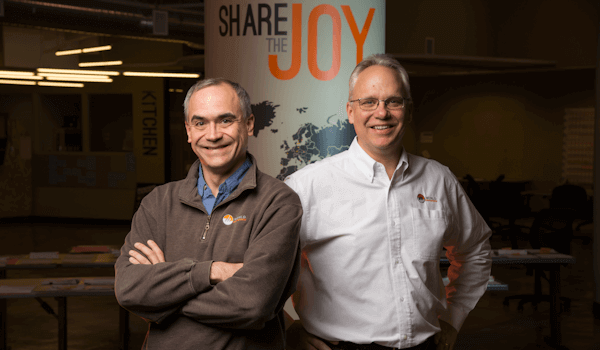I’m sure that many of us in moments of frustration complain „they just don’t get it.”
In fact, many a business is caught saying they do simply want to go faster and they thought an agile software team was the way to get there. The business would go on operating the same way they always had and lamented that IT still didn’t seem to be making the progress they hoped for after a transformation effort.
That was then
I am seeing something very different now. It almost like an Alice in Wonderland tale of „Through the Looking Glass” where everything is the opposite of what we learned to expect.
We host thousands of visitors to our company, Menlo Innovations, every year. They come from all over the world. And the majority of visitors are no longer IT people. We still have many IT teams visit, and they are the single largest sub group, but no longer the majority of visitors. We host teachers, executives, business teams, schools, hospital staff, non-profits, university administrators, insurance companies, real estate companies, auto manufacturers and their suppliers and many, many more.
Why do they come to see a software design and development team?
They are looking for inspiration on their own journey to business agility and quite frankly, it often has VERY little to do with software. They see old-fashioned multi-year business planning efforts the same way we saw waterfall and „big design up front.” They see traditionally organized, hierarchical teams as the problem, not the solution. They want new perspectives and they are looking to the software industry for them. Because we open our doors to any one who wants to visit, they come every year. By. The. Thousands.
They are listening, too. It’s not just industrial tourism they are seeking. They want change. They are ready to get started. They want a new way of working, much like we all did back in the late 90’s.
AND … some are proceeding faster than I’ve ever seen a traditional software team adjust. I have witnessed firsthand significant change inside of the largest, oldest companies in history. Not the entire company, mind you, but significant parts of a old line business units. They are changing their office layouts, dismantling their hierarchies, pushing decision making down to much lower levels, and empowering front line staff to run small experiments. The results they are producing is simply astounding. In short, they are changing their process AND their culture.
AND … some of this change is happening in companies where IT is refusing to change. The business people are now tempted to say about IT: „they just don’t get it.” Yes, I believe we have come full circle.
In fact, one company who had visited us, went home, made tremendous strides, invited me to visit and see what their transformation looked like. It was amazing. They were running small experiments everywhere. I asked them how this was all going in IT. They said they wouldn’t even take me to see their IT team … „it is soul-less organization.” My heart broke for them since it didn’t need to be that way.
What are they learning from our industry?
These enlightened business units are learning that lightweight process is valuable, that communication paths can be shortened, that hierarchy can be lightened without producing chaos. They are learning that working together is fun and it doesn’t have to be lonely. They are learning that big projects can be broken down into smaller pieces and value can be delivered along the way. They are learning that wallboard-based visual management systems are more effective than protected servers with project plans. They are learning that daily standups, and weekly reviews energize and steer towards success like they have never seen before. They are learning that meetings don’t have to be the answer, nor big thick three ring binders.
They are also learning to work around the software teams in their organizations if it turns out the IT team is the change laggard. I saw on one visit a monthly readout posted of employee satisfaction scores on several dimensions. All were green or yellow but one. The REDS all had to do with the employees answer to this question:
„The computer systems and software I use every day help me be more effective in my work.”
The opportunity is here!
A funny thing happened on the way to agility. Some software teams missed the transition and their business teams are now leaving them behind. It’s not too late! The winners circle in business will come to those who figure out that getting the whole business engaged is key.
Now get on your way!

Richard Sheridan
From kid programmer in 1971 to Forbes cover story in 2003, Joy, Inc. author Richard Sheridan has never shied from challenges, opportunities, or the limelight. While his focus has always been on technology, his passion is process, teamwork, and organizational design, with one inordinately popular goal: the Business Value of Joy! Sheridan is an avid reader and historian, and his software design and development team at Menlo Innovations didn't invent a new culture, but copied an old one ... Edison's Menlo Park New Jersey lab.

